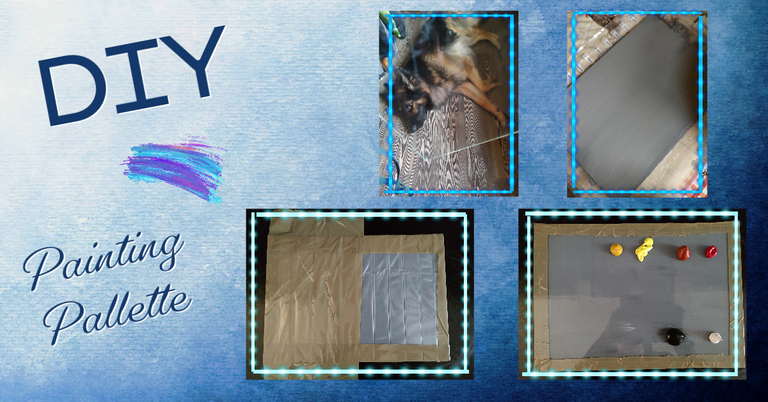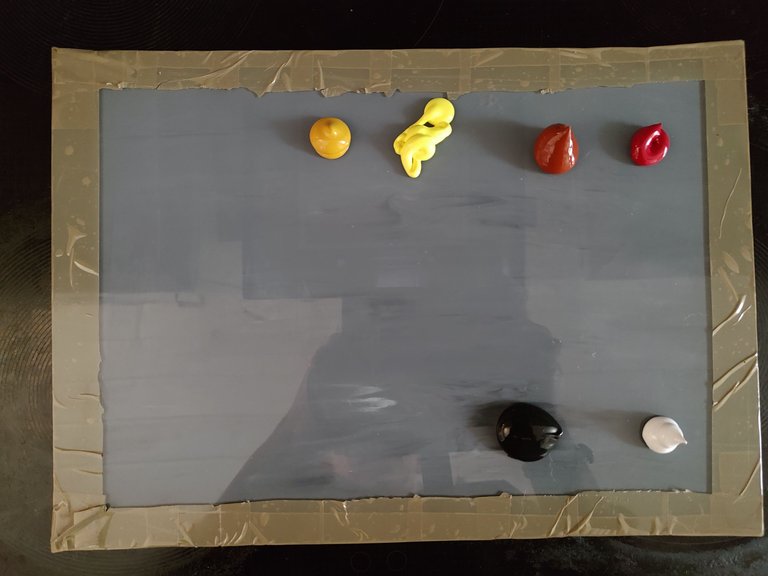
Something was annoying me
Now that I spend more and more time painting, I also started to get more and more annoyed with the mixing palettes that I have, and the palettes that I can buy here in the stores. For a stupid piece of plastic with some compartments, they just dare to ask for absolute top prices here in this country. Of course, it is possible to order from Uncle Ali in China, but first of all, it takes an awful long time for it to reach the Netherlands from China. I don't want to wait three weeks or more! And what is stated on the website, or the reality of what you eventually get in your hands, there may be quite some difference some times.
White palettes, whoever thought of that?
Another thing that started to bother me is the color of the palettes you can buy! Almost every painting palette that you buy is whiter than white! And now you might be thinking, isn't that fine! But since I come from photography, I really learned that you set the white balance most accurately with a neutral gray, or the 18% gray. That gives the most accurate and realistic representation of your colors in a photo.
Photography is not painting, I know!
Painting is different. Certainly. Painting is not photography, but painting is also about colors, and I am often mixing colors. Now to best judge the color, and the intensity of the color I'm mixing, I thought a neutral gray palette to do that would be much better. On white, a color quickly appears lighter or darker than it actually is. This is much easier to judge against a neutral gray background. But now came the real problem. Because where can such a neutral gray painting palette be found? And if it can be found at all, is it still fun to buy? Because no matter how much fun I'm having with painting, it's really just a hobby! I haven't made any money with it so far, and I seriously don't know if this will ever change. Do I even want this to change?
Time to get creative.
I work with acrylic paint and that has the property that if it dries on a hard surface, you can pull it off that surface in one go. The acrylic in the paint ensures that it remains somewhat elastic, and does not really adhere well to a smooth hard surface. So any non-porous smooth hard surface is actually suitable as a mixing palette. And that gave me an idea. The mixing palettes that you buy ready-made are those tear-off palettes (paper with a thin plastic coated top), which I find an expensive and not environmentally friendly solution. Or they usually consist of some kind of plastic. And of course, I don't have that available myself. And hey, given all the environmental problems, it might be a good thing if I got rid of that. Another problem solved, my carbon footprint was not increased today by buying a plastic palette. But even though I don't have plastic, I do have other things at home with which I could just as easily make something myself.
A luxurious wooden palette?
I thought about wood for a moment. We always have enough of that available here, but wood is a porous material and therefore not very suitable for this purpose. I could have solved it by adding epoxy, but that would take me a lot more time, and it wouldn't be ready today. Maybe I'll do that again later to have a much firmer palette, but that's for another time. Today I chose the fastest solution I could think of. And I also think a solution that anyone can do, that is inexpensive, works quickly, and is effective.
An old photo frame
What did I do, I took an old photo frame and took the glass out of it. I cleaned that glass very well on both sides and let it dry well. Then I put it on a piece of plastic, it doesn't matter what kind of plastic. It only serves to ensure that your work surface (table) remains clean. Then you take your Oxid Black paint and your Titanium White, with these two colors you mix a neutral middle gray and you smear it on one side of the glass.
Waiting for 2 hours!
Allow to dry very well, at least 2 hours! You probably know the feeling that you have to wait for something to dry, while all the time you're jumping around like a kid on Christmas Eve. Well, that's how I felt while I was waiting. But after the paint finally dried well it was time to check whether the paint had been applied opaque in one go. Usually, this works. Then you turn the glass plate over, and you stick strips of duct tape on this layer of gray acrylic paint. Make sure you keep the strips of tape slightly longer than your glass. This way you can fold another edge to get rid of the sharp edges of the glass. That makes a difference so that you don't open your hands every time you want to grab your palette like I did while I was cleaning the glass. Lol!
Something I did for extra strength
What I did myself for extra strength, incidentally, is the piece of plastic that I had used as protection for my table, cut to the size of the glass, and stuck it with the tape on the painted glass. This provides some extra strength and a softer base for your glass mixing palette. Once you've done that, simply turn your glass palette over, et voila!
I now have a neutral gray mixing palette on which my colors come across much more vividly and can be judged much better on intensity!



